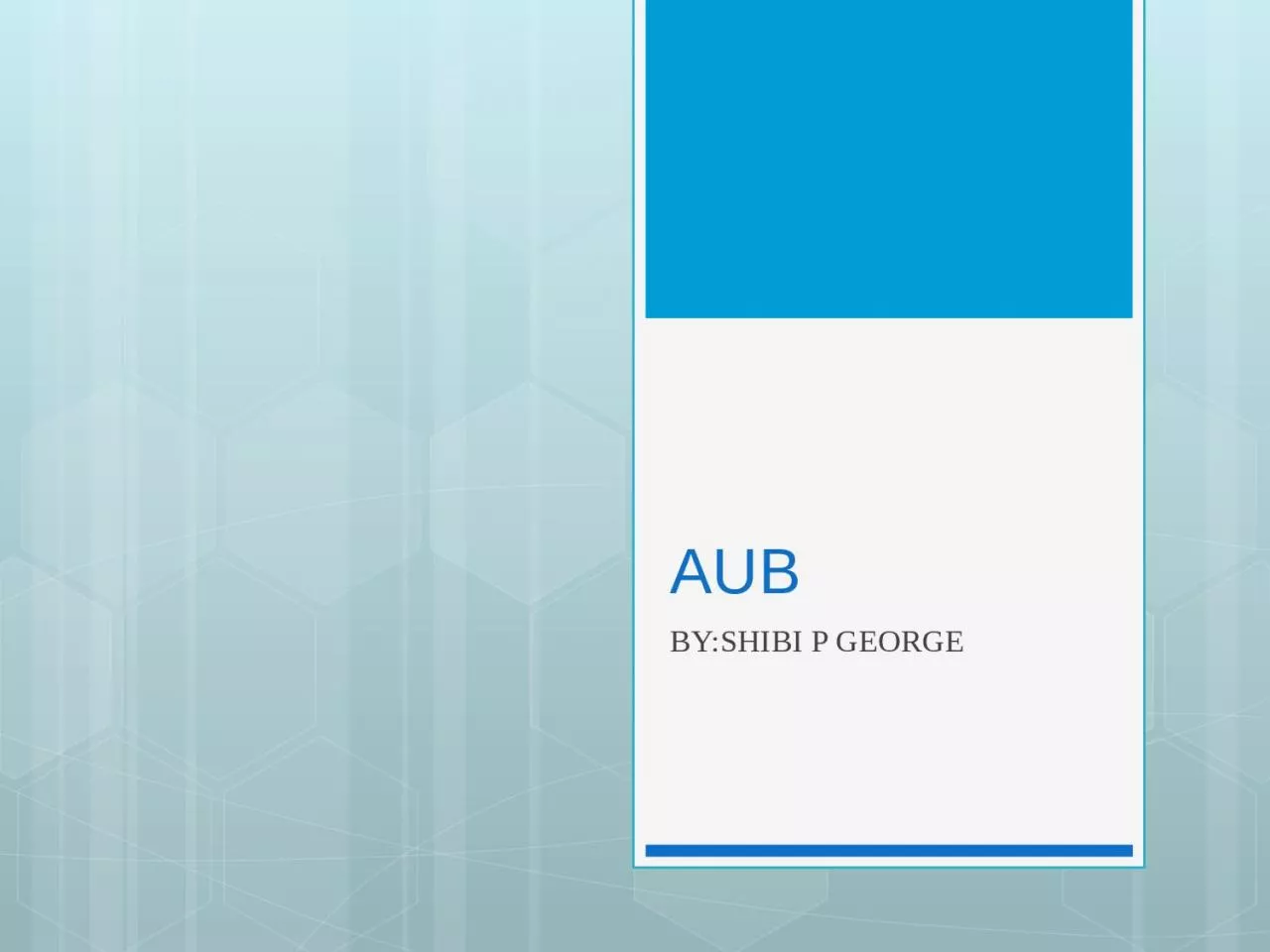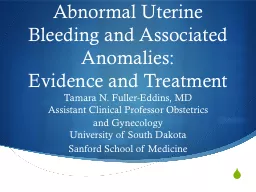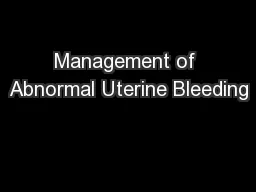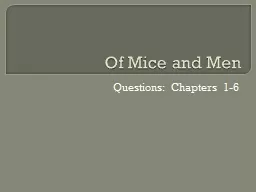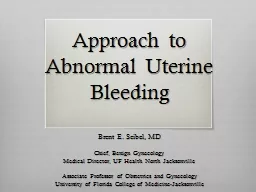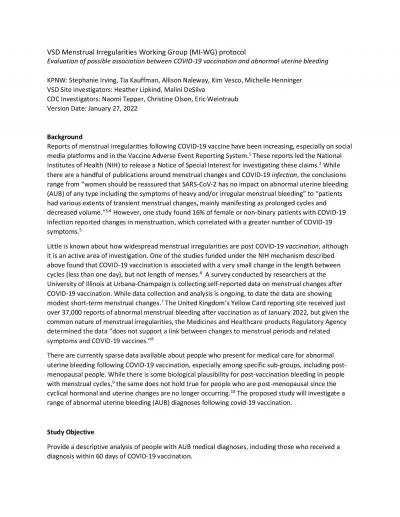PPT-AUB BY:SHIBI P GEORGE OBJECTIVES
Author : valerie | Published Date : 2024-01-29
Central objective At the end of the teaching session the student will gain knowledge in abnormal uterene bleeding and able to apply this knowledge into practice
Presentation Embed Code
Download Presentation
Download Presentation The PPT/PDF document "AUB BY:SHIBI P GEORGE OBJECTIVES" is the property of its rightful owner. Permission is granted to download and print the materials on this website for personal, non-commercial use only, and to display it on your personal computer provided you do not modify the materials and that you retain all copyright notices contained in the materials. By downloading content from our website, you accept the terms of this agreement.
AUB BY:SHIBI P GEORGE OBJECTIVES: Transcript
Download Rules Of Document
"AUB BY:SHIBI P GEORGE OBJECTIVES"The content belongs to its owner. You may download and print it for personal use, without modification, and keep all copyright notices. By downloading, you agree to these terms.
Related Documents

